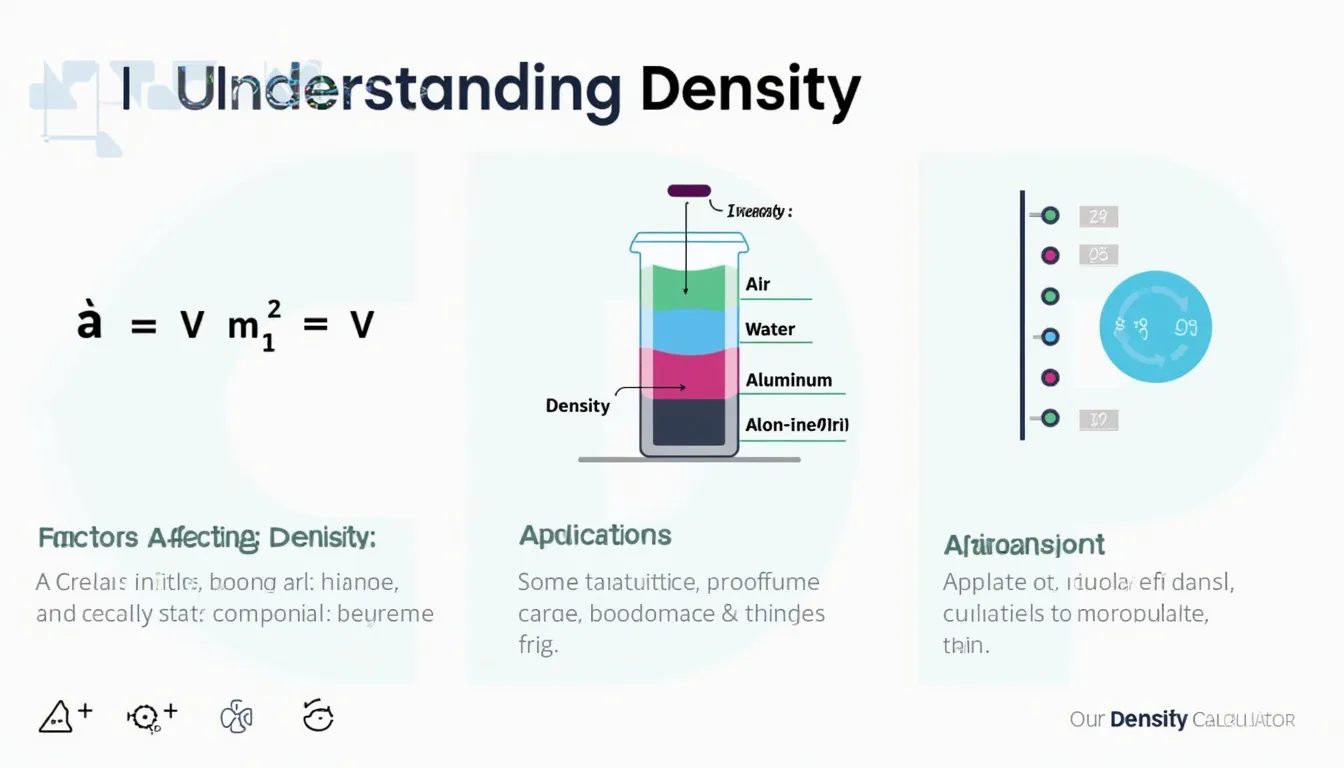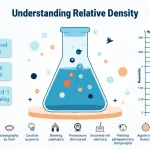Density Calculator
Is this tool helpful?
How to use the tool
1 – Fill in the fields
- Mass: Type the number, pick a unit.
Example A: 1.2 kg.
Example B: 2 lb. - Volume: Enter the space the substance occupies.
Example A: 800 mL.
Example B: 0.1 ft³. - Temperature & Pressure (optional): Needed for gases only, choose °C/°F/K and Pa/kPa/atm/mmHg.
2 – Understand the math
The core formula is $$\rho= rac{m}{V}$$ where m is mass and V is volume.
- Unit changes
g → kg: divide by 1 000.
mL → m³: divide by 1 000 000.
ft³ → m³: multiply by 0.028 316 8. - Gas option uses $$\rho= rac{P\,M}{R\,T}$$ with P pressure, T absolute temperature, M molar mass, R = 8.314 J·mol⁻¹·K⁻¹.
3 – Example calculations
- Liquid sample
1.2 kg / 0.000 8 m³ = 1 500 kg/m³. - Imperial input
2 lb = 0.907 kg, 0.1 ft³ = 0.002 832 m³.
Density = 0.907 / 0.002 832 ≈ 321 kg/m³.
Quick-Facts
- Water density: 997 kg/m³ at 25 °C (NIST Chemistry WebBook, 2023)
- Standard air density: 1.225 kg/m³ at 15 °C, 101.325 kPa (NASA Atmosphere Model, 1976)
- Gold density: 19 300 kg/m³ (CRC Handbook, 2022)
- SI unit for density is kg/m³ (BIPM SI Brochure, 2019)
FAQ
What is density?
Density equals mass divided by volume; it shows how much matter occupies a given space (BIPM SI Brochure, 2019).
How does temperature affect gas density?
Raising temperature lowers gas density because molecules spread apart; a 10 °C rise drops air density ≈ 1.9 % (NASA, 1976).
Which unit conversions does the calculator handle?
It converts g↔kg, lb↔kg, oz↔kg and L, mL, cm³, ft³, in³↔m³ automatically.
How can you tell if an object floats?
If its density is below the fluid’s, buoyancy wins and it floats; otherwise it sinks (Archimedes’ Principle, Ancient Greece).
Does pressure change liquid density significantly?
Liquids compress little; a 100 bar rise changes water density by ~0.5 % (Engineering Toolbox, URL).
How precise is the result?
The tool returns four-decimal accuracy, adequate for lab work and design tolerances (ISO 5725-1, 2019).
Can you use it for mixtures?
Yes—input total mass and total volume to get bulk density; individual components remain unresolved (Perry’s Handbook, 2021).
How do I convert kg/m³ to g/cm³?
Divide by 1 000: “1 000 kg/m³ = 1 g/cm³” (NIST, 2023).
Important Disclaimer
The calculations, results, and content provided by our tools are not guaranteed to be accurate, complete, or reliable. Users are responsible for verifying and interpreting the results. Our content and tools may contain errors, biases, or inconsistencies. Do not enter personal data, sensitive information, or personally identifiable information in our web forms or tools. Such data entry violates our terms of service and may result in unauthorized disclosure to third parties. We reserve the right to save inputs and outputs from our tools for the purposes of error debugging, bias identification, and performance improvement. External companies providing AI models used in our tools may also save and process data in accordance with their own policies. By using our tools, you consent to this data collection and processing. We reserve the right to limit the usage of our tools based on current usability factors.







